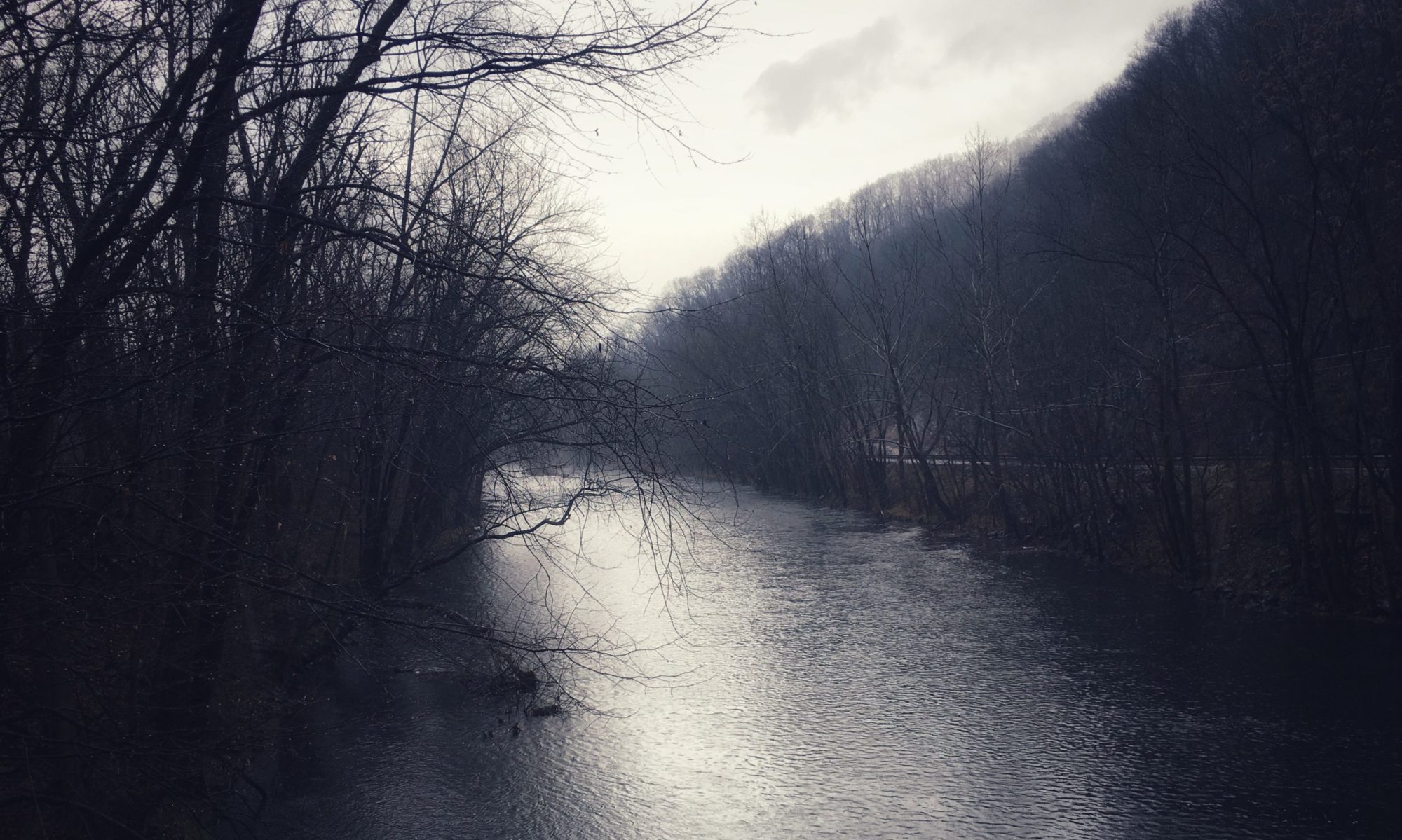
Trillium erectum
Wake-robin, red trillium,
stinking Benjamin: a three-faced flower.
It lives by subterfuge.
Its stem is really a scape,
its leaves are really bracts,
sessile, glabrous, cuneate
or attenuate at the base,
broadly ovate, with margins
entire & acuminate apex.
The rank-smelling, self-
compatible flowers alternate
petals with sepals, three of each,
& six stamens ring the single,
three-part pistil.
To us they are wake-robins,
flushed with good cheer,
but they tempt frustrated
Calliphorid flies with the scent
of a blood-red corpse,
& get pollinated for nothing.
Later they will lure ants
with an edible bait, the elaiosome:
a fleshy appendage to the seed,
itself inedible — designed
to be discarded in the colony’s
rich compost, & there take root.
So many masks!
Will the real Trillium erectum
please stand up?
OTHER POSTS IN THE SERIES
- How to Know the Wildflowers: Preface
- Spring Beauties
- Red Trillium
- Painted Trillium
- Miterwort
- Marsh Marigold
- Goldthread
- Foamflower
- False Solomon’s Seal
- Early Meadow-Rue
- Dutchman’s Breeches
- Appalachian Barren Strawberry
- Wood Anemone
- Wild Geranium
- Mayapple
- Golden Ragwort
- False Hellebore
- Fairy Bells
- Trout Lily
- Hepatica
- Yellow Violet
- Jack-in-the-Pulpit
- Starflower
- Dwarf Ginseng
- Bloodroot
- Cutleaf Toothwort
- American Golden Saxifrage
- Blue Cohosh
- Ambrosia artemisiifolia


Like this cheerful, stinking bawdiness!
And yes, a grand idea for weeks when the snow comes down every day. Like finding a brave little snowdrop under the eaves.
Do uvularia! It’s just about my favorite in my wildflower garden. Those stems! So marvelous.
Unfortuantely, it’s not in Jennifer’s photo set. But then neither are hepatica or fringed polygala, two other favorites. I will try and write poems in response to her photos first, so she and her friend can go ahead with their book project, but if I’m not burnt out on wildflower poems by then, I’ll see about doing some of these others, too.
OK, now I have to check my inventory to see if I have good enough versions of the flowers mentioned here. (I’m also missing Trout Lily I noticed!)
Then there’s bloodroot, wild ginger, rue anemone, twinflower, Solomon’s seal, wild sarsaparilla, Viginia bluebells, Jack-in-the-pulpit (the sex change part is pretty irresistible!), cutleaf toothwort, Canada mayflower, longspur violet (or any of the violets)…
Dave,
In the red trillium, you have just created a perfect metaphor for human beings — Don’t we all really live by subterfuge? Born, we surround ourselves with defences against the vagaries of being alive. Quite a number of us live by our wit and wile, others by unabashed physical pulchritude, violence, disingenuous stances, fraud, betrayal. Yet, we get by with the wake robin’s good cheer, amass quite a loot of purloined happiness or power or fraudulent charisma—attractive ploys to feed unproductive greed—all for the graveyard, food for the worms, compost really.
While we have built civilisations to earn even an insignia of divinity, man has likewise built fearsome weapons of destruction, and, —by profligacy and uncaring-recklessly-imprudent stewardship of a scarred paradise—, the wrath of a pissed-off terra firma whose landslides, floods, viruses, O—a baleful of cataclysmic mayhem— have done us in, like those hapless ants, trapped together to rot in compost. Too late.
Buy by design, man is provided with Trillium Erectums as built-in caveats—subterfuges notwithstanding—that by our shadows we will not prevail. The true triullium erectum should still lie within homo erectus because he is homo sapiens.
Thanks for the comment, Albert. I’m glad you got so much out of this poem. It’s always my goal when I write about non-human beings to make them seem as relevant to out own experience of the world as possible, without reducing them to mere metaphors. I hadn’t even thought consciously of the resonance of erectus with our own strange (for a primate) upright habit, but that’s definitely there, you’re right.
Check out my blog’s post on your poem, Dave. I thought I would give a proper acknowledgment of your work. I am happy to read your poems and reacting to your porch meditations.
Thanks, Albert. I really appreciate your enthusiasm and generosity.
A wonderful orgy of specialised vocab. Nice and chewy to read out loud.
Oh good! Yeah, botanical terminology is hard to resist, isn’t it? Between that and the rich folklore for many of these plants, spring wildlfowers are a poet’s dream.
Yes, this one was like digging in rich, deep oak-leaf humus, Dave!
Thanks, Beth. This poem didn’t come easy — I had to dig a number of test holes before I hit pay dirt.
Oh glabrous day! Callooh! Callay! :-)
Glad you’re reading, R.